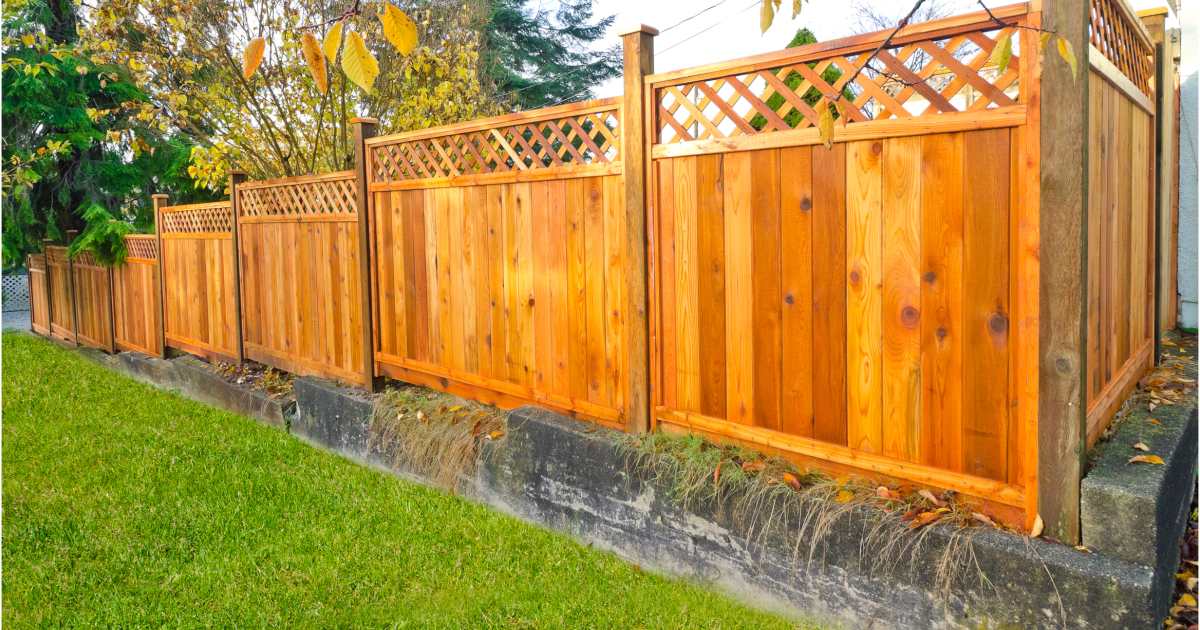All Categories
Featured

When thinking about installing a fencing on your building, one of the most essential actions is to comprehend whether you need an authorization. Fence installations frequently call for a permit to guarantee that the structure adheres to neighborhood zoning regulations, building codes, and safety and security standards. The particular authorizations called for can differ relying on your place, the kind of fencing you prepare to mount, and the elevation or placement of the fence. Here's a guide to aid you browse the procedure of acquiring a fence permit and make certain that your setup is lawful and problem-free.
Why You Required a Permit for a Fencing Installation. A fence authorization is required to make certain that the installment fulfills local laws. The permit procedure aids neighborhood authorities validate that your fence does not conflict with website traffic exposure, respect your residential or commercial property lines, or violate height restrictions. It likewise makes sure the security of the structure, so it doesn't pose a threat to you, your next-door neighbors, or the public. Installing a fence without a license can result in fines, elimination of the fence, or delays in construction, so it's important to check whether an authorization is required before starting your task.
Kinds Of Licenses You May Need. There are a couple of usual kinds of authorizations you may need for a fencing setup:
Structure License. A building authorization is the most common license required for fence setups. This license makes sure that the fence fulfills security standards and is created according to local building regulations. A structure permit is normally required if the fence exceeds a certain elevation (frequently 6 feet), is made of certain products, or lies near a public pathway or roadway.
Zoning Permit. A zoning authorization might be called for to confirm that your fencing adheres to local zoning legislations. Zoning policies can determine where a fencing can be positioned on your residential property, exactly how high it can be, and whether it is admitted certain areas (such as along home lines or in front yards) For example, some municipalities have laws limiting the elevation of surround the front lawn to make certain visibility for vehicle drivers and pedestrians.

Trouble Permit. You may require a setback permit if you are developing a fence near your home line or close to a road. A trouble refers to the range a framework, including fencings, must be from the building line. Problem policies vary by area, and guaranteeing that your fence is put correctly can prevent conflicts with next-door neighbors and avoid infractions.
Home Owner Association (HOA) Authorization. If you reside in an area controlled by a Property owner's Association (HOA), you might require approval from them in enhancement to neighborhood permits. HOA guidelines usually cover the kind of materials, height, design, and color of fencings. Even if your regional government doesn't require an authorization, your HOA may still have particular guidelines that need to be adhered to.
Just How to Obtain a Fence License. To make an application for a fencing authorization, you'll need to contact your neighborhood structure department or preparation office. The application procedure commonly involves filling in a form, paying a fee, and sending a site strategy of your residential property that shows the suggested area of the fencing. You might likewise require to consist of information regarding the products, elevation, and design of the fencing.
In many cases, a regional official might require to examine your residential property prior to authorizing the license. When the license is given, you will certainly be licensed to wage your fence installment.
When Is a Permit Not Needed? In particular circumstances, a permit may not be needed. These circumstances can consist of:
Low Height Fences: In lots of locations, fences that are below a certain elevation (commonly 3 to 4 feet) may not require a license, specifically if they are positioned in the yard or other non-visible areas.
Fencing Substitute: If you're replacing an existing fence with the same height and material, some areas may not call for a new license.
Non-Obtrusive Fencings: Short-lived or attractive fences, such as those used for gardening or landscaping purposes, may not require licenses as long as they are low and not long-term.
Nonetheless, it is essential to talk to your neighborhood zoning workplace or building division, as guidelines can vary by territory.
Repercussions of Not Obtaining a License. Stopping working to obtain the essential licenses can bring about substantial consequences. These consist of fines, required removal of the fencing, and even hold-ups in building. Furthermore, if your fence doesn't fulfill neighborhood laws, you might deal with lawful concerns with neighbors or regional authorities.

Conclusion. By guaranteeing that you follow regional policies and acquire the necessary licenses, you can ensure and avoid costly errors that your fence is legally compliant. Check with your local structure division, HOA, and zoning office to identify what authorizations are needed for your certain fence task.
Latest Posts
Check Out the Premier Auto Repair Offers in Montclare, Chicago
Published May 24, 25
1 min read
Join Your Financial Partner at WyHy – Key Tools for Your Financial Success
Published May 24, 25
1 min read
Explore WyHy FCU – Top Benefits for Your Financial Success
Published May 23, 25
1 min read
More
Latest Posts
Check Out the Premier Auto Repair Offers in Montclare, Chicago
Published May 24, 25
1 min read
Join Your Financial Partner at WyHy – Key Tools for Your Financial Success
Published May 24, 25
1 min read
Explore WyHy FCU – Top Benefits for Your Financial Success
Published May 23, 25
1 min read